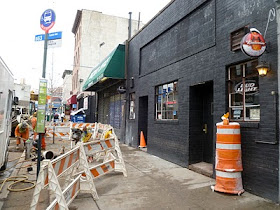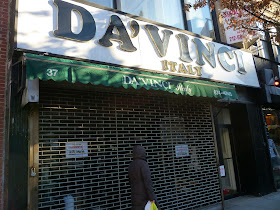We seem to be in one of those periodic spells where the New York landmarks fall like dominos. Monte's Venetian Room definitely gone for good. O'Connor's Bar to be changed beyond recognition. Karl Ehmer leaves Ridgewood and its building becomes a storage facility. Carmine's gives up finally.
And now we hear that Manganaro's Grosseria Italiana, one of the bedrock institutions of Ninth Avenue in Midtown, with roots going back to the late 1800's, will close, and the owner will sell the building. The frozen-in-time place will shutter as soon as a deal is sealed. So hurry up. This is obviously not the usual circumstance of a rent hike, since the Manganaros own the building. Business has been slow, said owner Salvator Dell'Orto. I'll post more about this in the future. For now, read more here.
The shop began as a wine store in 1893 and expanded into hero sandwiches—they are said to be the inventors of the form by the way—and red sauce fare during the Prohibition, attracting garment workers, Italians in the neighborhood, and the patrons of the then Metropolitan Opera House. Business began to decline with the arrival of the Lincoln Tunnel (which forced the demolition of much of the neighborhood) and the more recent arrivals of places like Whole Foods and Zabar's. The notoriously surly attitudeof the waitstaff may not have helped.


















































